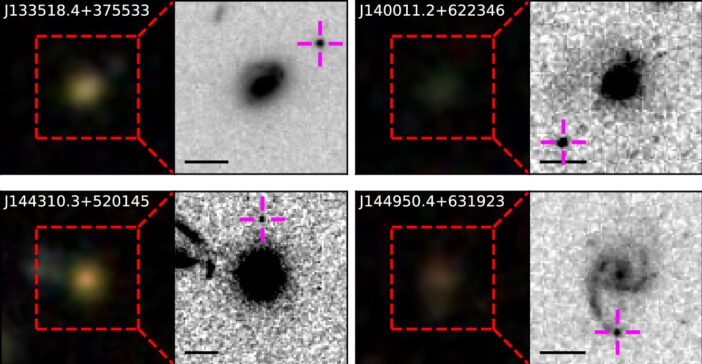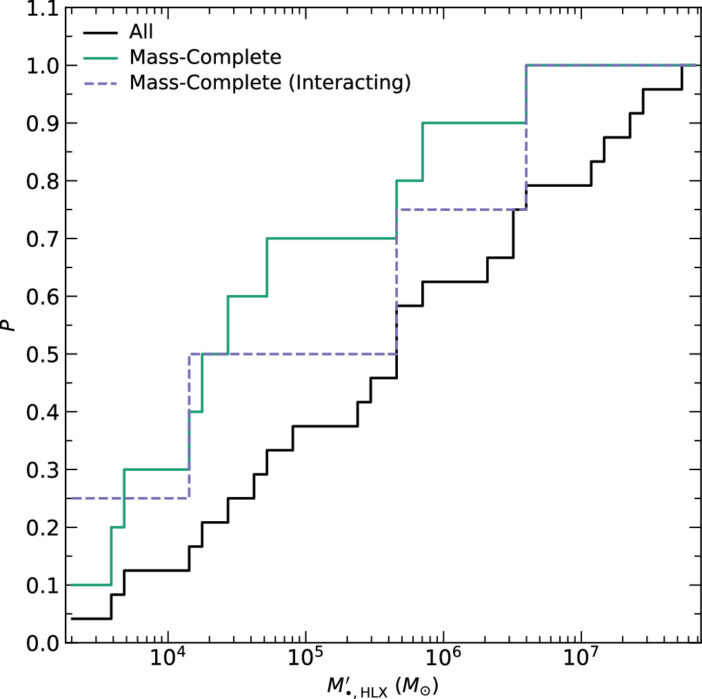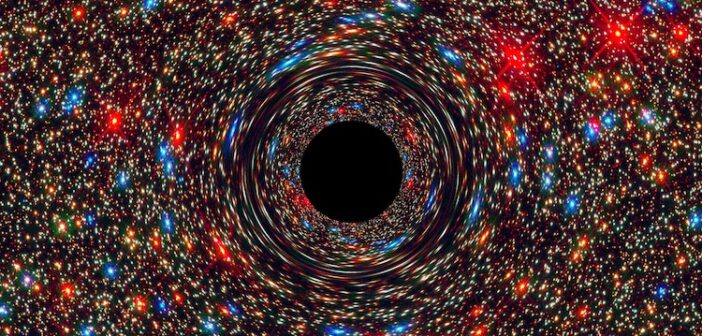Editor’s Note: Astrobites is a graduate-student-run organization that digests astrophysical literature for undergraduate students. As part of the partnership between the AAS and astrobites, we occasionally repost astrobites content here at AAS Nova. We hope you enjoy this post from astrobites; the original can be viewed at astrobites.org.
Title: Merger-Driven Growth of Intermediate-mass Black Holes: Constraints from Hubble Space Telescope Imaging of Hyper-luminous X-Ray Sources
Authors: R. Scott Barrows et al.
First Author’s Institution: University of Colorado Boulder
Status: Published in ApJ
Who doesn’t love a good origin story? How did your favorite superheroes and supervillains become one in the first place? Sometimes, it may boil down to a single instant, like that fateful night when Bruce Wayne and his parents took a turn down a dark alley. Occasionally, they evolve slowly, through several internal battles, to emerge as the greatest supervillain in the Galactic Empire. Regardless of how they became some of the most powerful characters in the fictional (or real) universe, there is no question that origin stories help us understand them better.
Our very universe has (super) entities whose origin story is shrouded in mystery. These are the supermassive black holes, which are powerful objects that occupy the centers of nearly every galaxy in the universe. These black holes are believed to have been around for billions of years (some were even formed when the universe was very young) and are some of the most massive and luminous objects in the universe. However, we still don’t understand how the first black holes formed. The enthusiastic astronomy community has been hard at work trying to come up with an origin story. Some astronomers believe that the first black holes formed when the first stars in the universe died, while others believe they formed when dense gas in the early universe directly collapsed into black holes without forming stars first.
So, how can we determine the true origin story of the black hole? We look for clues in the universe that we see through our telescopes. One way is by looking at the masses of certain black holes called intermediate-mass black holes. These are believed to be relics of early black holes that have survived relatively unscathed to our present universe. If most of these black holes have low masses (102 – 104 solar masses), they were likely to have formed from the collapse of early stars. If they instead have masses around 104– 105 solar masses, then they were formed from the collapse of dense gas. This difference in mass is a likely consequence of the conditions involved in the collapse scenario.
It is challenging to detect intermediate-mass black holes in the first place, let alone measure their masses. The authors of today’s article set out to achieve this mighty task! They first identify a sample of hyper-luminous X-ray sources. As the name suggests, these are highly luminous X-ray sources, and they are detected at off-center locations in a galaxy. This characteristic makes it likely that they are linked to intermediate-mass black holes. Intermediate-mass black holes are more likely to wander and can be found in different parts of a galaxy, as opposed to supermassive black holes, which are always found at the centers of galaxies. The authors then use the Hubble Space Telescope to look at these hyper-luminous X-ray sources and their surroundings to understand them better. Let’s see the clues the authors gather to formulate their theory of the formation mechanism of black holes.
Clue No. 1: Violent Disruptions Found at the Scene of the Crime!
The authors find that the strongest X-ray sources are associated with systems showing signs of mergers between galaxies. The hyper-luminous X-ray sources do not reside in a definite galaxy (Figure 1) but rather in a compact source that more closely resembles the core or center of a galaxy. The authors also measure the masses of the objects that host the X-ray sources using spectral energy distributions and the flux measured by Hubble. They find that nearly all the masses of the objects are larger than typical globular clusters and, thus, they are more likely to be the leftovers of dwarf galaxies that have merged or are merging with the more massive galaxy.

Figure 1: The Sloan Digital Sky Survey images (left) and Hubble images of the hyper-luminous X-ray source candidates (highlighted by the magenta pointers). Each candidate lies outside/on the edge of a larger galaxy in the center of each Hubble image. [Adapted from Barrows et al. 2024]
Clue No. 2: What Are the Masses of Those Black Holes?
The authors then use several scaling relations and different Eddington ratios (which give a sense of how quickly the black hole is accreting based on its luminosity) to determine the mass of the black hole. Looking at the lowest-mass black holes (as they are more similar to the early seed black holes) (Figure 2), they conclude that 28% of their samples agree with the direct collapse scenario (which forms more-massive black holes) and 21% with the formation in dense stellar clusters (which forms less-massive black holes).

Figure 2: The total fraction of black hole masses (determined from scaling relations) in hyper-luminous X-ray sources, added over the sum of each contribution from black holes at different mass ranges. The data has been corrected to be mass-complete, which determines how many sources are present in a field based on the number of sources detected. [Barrows et al. 2024]
The Plot Thickens!
Looking at the larger masses of the intermediate-mass black holes, it is tempting to conclude that we have narrowed the origin story of black holes to the direct collapse scenario. However, since most of the hyper-luminous X-ray sources are found in galaxies closely associated with merger events, the authors argue that the gas falling into the black hole during the galaxy merger could have triggered the increase in the size of the black hole seeds from their original mass. They determine that the low-mass X-ray sources all have larger X-ray luminosities than expected from their host stellar masses. This could hint that accretion likely increases the size of the black hole, which leads to enhanced luminosity. The original black hole seeds were thus likely much smaller, suggesting they were formed from stars.
Well, that was full of twists and turns! This article has added some evidence favoring the stellar collapse formation mechanism. With more data and further analysis, we will one day end up with convincing numbers to help us determine how the first black holes in the universe formed. And hey! If I could sit through all of those 7 hours and 1 minute to find out how Anakin Skywalker became Darth Vader, I think I would be fine waiting a couple more years (hopefully!) to uncover the origin story of these mighty black holes!
Original astrobite edited by Storm Colloms.
About the author, Archana Aravindan:
I am a PhD candidate at the University of California, Riverside, where I study black hole activity in small galaxies. When I am not looking through some incredible telescopes, you can usually find me reading, thinking about policy, or learning a cool language!
